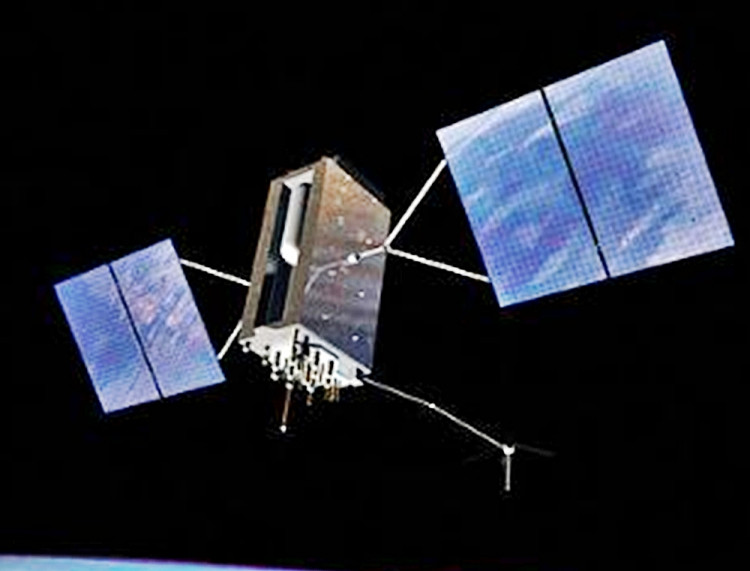After a more than four-year-long delay, the first GPS Block IIIA satellite (identified as GPS III SV01) of the U.S. Air Force finally made it into geosynchronous orbit two weeks ago and should become fully operational by early 2020.
Costing some $577 million, each of the 10 new Block IIIA satellites will have up to eight times better anti-jamming capabilities compared to newest GPS satellites, the Block IIF, making it more resistant to electronic warfare (EW) attacks by either the Russians or Chinese. The new satellites also provide three times better accuracy, said Lockheed Marin, the satellite's developer.
The anti-jamming capabilities of the GPS IIIA birds spring from its use of the new "M-code" (or Military code) first used on the operational Block IIF series launched from 2012 to 2016. The new M-Code signal is also designed for more secure access to military GPS signals. M-code is transmitted on the L1 and L2 frequencies already used by the previous military code, which is the P(Y) code.
The new military satellite will allow more accurate targeting of smart U.S. missiles and bombs that depend on GPS for unparalleled accuracy in all kinds of weather. GPS Block IIIA satellites will also be used to keep the entire NAVSTAR Global Positioning System operational. The tenth and final GPS Block IIIA satellite launch is scheduled for the second quarter of 2023, if all goes well
"Launch is always a monumental event, and especially so since this is the first GPS satellite of its generation launched on SpaceX's first national security space mission," said Lt. Gen. John F. Thompson, commander of the Space and Missile Systems Center and Air Force program executive officer for space.
He said that as more GPS III satellites join the constellation, it will bring better service at a lower cost to technology now fully woven into the fabric of any modern civilization.
Gen. Thompson said GPS Block IIIA satellites keep GPS the gold standard for positioning, navigation and timing information. He said the launch of the first GPS Block IIIA satellite was a capstone, but it doesn't mean the Air Force is done. He said the Air Force is going to run a series of procedures for checkout and test "to ensure everything on Vespucci functions as it was designed."
The emphasis on almost jam-proof GPS signals is critical given the simplest of countermeasures blinded older GPS satellites in use in the 1990s. The United States Armed Forces first used GPS navigation in war during the 1991 Persian Gulf War.
GPS was an immature technology at the time and was basically used to allow the Coalition to navigate and perform maneuvers. There were no GPS guided weapons at the time.
Even the less than sophisticated Iraqi military foiled early GPS signals by installing jamming devices on likely targets. These jammers emitted radio noise, disrupting reception of the weak GPS signals.
Today, however, the more sophisticated Russian and Chinese militaries can and have jammed civilian U.S. GPS signals -- and will do so on a massive scale in case of a conflict.
Military analysts agree that China and Russia have EW capabilities that can interfere with the signals from commercial satellites. It remains unknown if Chinese and Russian EW capabilities will be fully effective against existing and future GPS military satellites such as the Block IIIA.
With the Block IIIA birds, the Pentagon is betting Russia and China won't be as effective as they otherwise would have been. GPS Block IIIA satellites are the first series of third-generation GPS satellites with new signals that broadcast at higher power levels.
On the civilian side, GPS III's L1C civil signal will make it the first GPS satellite broadcasting a signal compatible with other international global navigation satellite systems, thereby improving connectivity for civilian users.
GPS satellites use the NAVSTAR radio navigation system owned by the U.S. government and operated by the Air Force.






